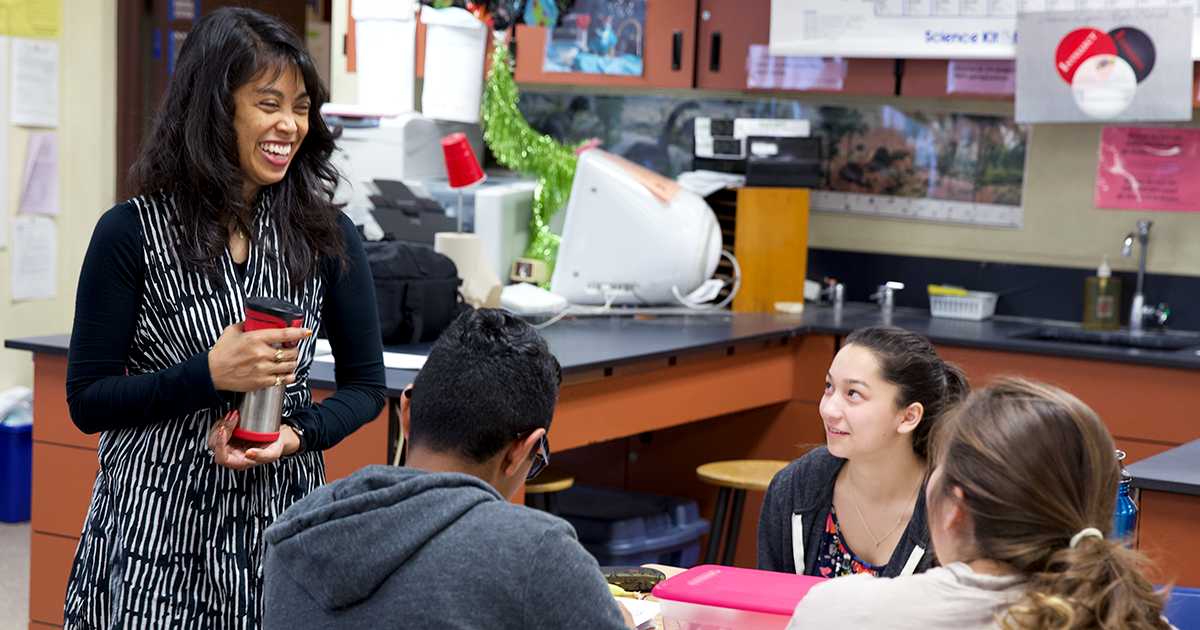High-Quality Tutoring: An Evidence-Based Strategy to Tackle Learning Loss
Posted on

Written by REL West’s Pamela Fong, this article first appeared on the REL West blog and is posted here with permission.
This fall, schools are welcoming students back to in-person instruction, following months or even a year or more of closed campuses and distance learning because of the COVID-19 pandemic. Virtual schooling was not successful for all students.[1] And along with experiencing other stresses caused by the pandemic, some students returning to classrooms have increased social and emotional needs and substantial academic learning loss.[2]
Further, many student groups who were disadvantaged in school prior to the pandemic — primarily students from low socioeconomic communities and Black, Latinx, and Indigenous students — were disproportionately impacted during the pandemic, resulting in further widening of achievement gaps.[3] For school and district leaders who are considering strategies to accelerate student learning, high-quality tutoring is one evidence-based strategy that can make a positive impact.[4]
Accelerate Learning to Address Lost Instructional Time
To address lost instructional time, the U.S. Department of Education suggests that local education agencies (LEAs) focus their American Rescue Plan (ARP)[5] funds on strategies that accelerate student learning. School and district leaders can choose from four evidence-based strategies to help students catch up academically:
- In-school acceleration
- High-quality tutoring
- Programs offered outside of school hours
- Summer learning and enrichment
LEAs may choose to implement one or a combination of strategies, depending on students’ academic needs, available resources, and partnerships with local organizations that may be able to assist.
Accelerated learning ensures that students, especially those who have experienced the greatest learning losses, are consistently instructed with grade-level materials, are provided scaffolding, and are gaining the most critical just-in-time content knowledge and skills needed to access curricula at the appropriate grade level. Accelerated learning is different from remediation; with remediation, students are instructed in the core content of a lower grade level, thus delaying their engagement with grade-level curricula.
What High-Quality Tutoring Looks Like
A recent systematic review and meta-analysis examined 96 studies on tutoring programs and found that tutoring is an effective practice that yields consistent and substantial positive impacts on learning outcomes.[6]
Key takeaways regarding high-quality tutoring include the following:
- Tutoring is most effective when conducted at school, during school hours, and in three or more sessions per week for at least 30 minutes each.
- Tutoring is more effective when conducted by teachers or professional tutors who are well trained and supervised rather than by volunteers, peers, or parent tutors.
- Early-grade students (pre-K–1) benefit from 1:1 tutoring; students in grades 2–5 benefit from small groups with a tutor-student ratio of 1:3 or 1:4; secondary students benefit from small groups with a tutor-student ratio of no more than 1:4.
- Reading tutoring tends to be relatively more effective for students in grades pre-K–1, whereas math tutoring tends to be more effective for students in grades 2–5.
Since the start of the pandemic, Regional Educational Laboratory (REL) West has been providing evidence-based resources to support education leaders and practitioners as they plan and make informed decisions about programming and practices. REL West developed the REL West COVID-19 Response resource page, which includes informative blogs, resource memos, and archived webinars on a variety of topics related to the impacts of the pandemic. Some topics include strategies educators can use to support students’ social and emotional needs, district practices for promoting safe digital learning environments, and ways to engage parents and students from diverse populations.
REL West hosted a three-part webinar series on high-quality tutoring. View all three webinars in the series below.
Related Resources
To learn more about high-quality tutoring, explore the following resources:
- Systematic review and meta-analysis report: The impressive effects of tutoring on preK–12 learning: A systematic review and meta-analysis of the experimental evidence, Andre Joshua Nickow, Philip Oreopoulos, and Vincent Quan, Annenberg Institute at Brown University
- Informative summary of the Nickow et al. (2020) meta-analysis: The Transformative Potential of Tutoring for Pre K–12 Learning Outcomes: Lessons from Randomized Evaluations, Abdul Latif Jameel, Poverty Action Lab
- Evidence brief: Accelerating Student Learning With High-Dosage Tutoring, EdResearch for Recovery
- Informational brief: Using the American Rescue Plan Act Funding for High-Impact Tutoring, National Student Support Accelerator, Annenberg Institute for School Reform at Brown University
- Handbook: ED COVID-19 Handbook, Volume 2: Roadmap to Reopening Safely and Meeting All Students’ Needs, U.S. Department of Education
- Resource: Strategies for Using American Rescue Plan Funding to Address the Impact of Lost Instructional Time, U.S. Department of Education
References
[1] U.S. Department of Education, Office for Civil Rights. (June 2021). Education in a pandemic: The disparate impacts of COVID-19 on America’s students. https://www2.ed.gov/about/offices/list/ocr/docs/20210608-impacts-of-covid19.pdf
[2] Ibid.
[3] Ibid.
[4] Nickow, A. J., Oreopoulos, P., & Quan, V. (2020). The impressive effects of tutoring on preK–12 learning: A systematic review and meta-analysis of the experimental evidence [EdWorkingPaper: 20–267]. Annenberg Institute at Brown University. https://doi.org/10.26300/eh0c-pc52
[5] In March 2021, Congress passed the American Rescue Plan, which includes emergency relief funds to assist school districts in safely reopening schools and addressing the impact of the pandemic on students.
[6] Nickow et al. (2020).
